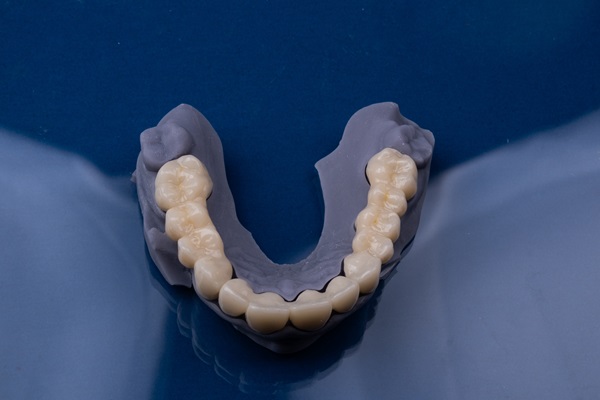What is a Dental Implant Bone Graft?

In the process of learning about dental implants, the term bone graft often comes up. While a bit ominous sounding, the dental implant bone graft is a routine and painless addition to the procedure when it is necessary. In order to assure a successful implant, we may deem a bone graft necessary.
This means that for whatever reason, the jaw bone needs more support to be able to withstand and hold the implant for the long term.
Getting down to the basics
A normal dental implant consists of a metal screw that we drill into the bone so that both naturally fuse together. Then, we normally place an abutment on top to which we can attach a dental crown. This all comes together to form an almost undetectable and natural-looking addition to your smile. However, the dental implant bone graft adds a few more steps before you can start this process.
Once we decide that a bone graft is right for you, we may harvest the bone from another place in your own body, also known as the “gold standard” or from an animal in a procedure known as a xenograft. This type of bone graft will draw bone from cows and pigs, known as bovine and porcine respectively.
There is no need to worry since the material goes through a thorough sanitization process in preparation for this use. Xenografts come with less recovery since it removes the need to have a secondary wound to heal from. While more common due to convenience, this method is slightly slower. Whichever method works best for your situation is the one that we will most likely go with.
The process
We will possibly introduce the new material with a technique known as “guided tissue regeneration.” The harvested tissue creates a scaffold on which the new tissue can grow. This new bone will take anywhere from 3 to 12 months to be ready to receive an implant. Although it is important to be patient in this process in order to observe the best results.
However, the degree of bone graft needed varies from situation to situation, so this can be much shorter for some. Hearing the term bone graft can sound scary but with the right information, you can be empowered to make the right decisions for your dental health. While the procedure is routine and common, the process of bone grafting often requires more expertise than the implant itself.
It is important to ask the right questions to make sure that the methods chosen are methods that you are comfortable going through. Your oral surgeon is well trained to help walk you through this process. The very first step is choosing someone that you can trust.
Call us today
There are many different ways to go about getting a dental implant bone graft. You can harvest your own bone or the bone of an animal, usually a cow. After the harvesting process, your oral surgeon creates a graft to trick your own body into growing the bone that you need to support an incredible implant.
After a few months of healing, you are finally able to put into place the implant consisting of a metal screw, an abutment and a crown which renders your implant extremely natural looking, seamlessly integrating into your smile.
Related Posts
Dental implants are highly recommended when it comes to replacing missing teeth. They are the only oral prosthetics that replace teeth and their roots. Other prosthetics like dentures and bridges simply replace the visible part of the tooth.Implants are surgically placed in the patient’s jaw and left there to fuse with surrounding bone tissues. The…
When a patient has dental implants, follow-up visits are important. Many patients need to have replacement teeth for a variety of reasons. You may have gotten them because you lost several teeth due to a traumatic accident, or you may have been on medication that caused your teeth to deteriorate. Regardless of how you lost your…
When you’re considering having dental implants surgery, you may be curious about the steps following the initial surgery of the implants into your mouth. The next stage is crown placement on dental implants. The crown will sit on top of the implant and work together to help your new teeth work and feel just like…
General dentistry treats oral health, functional and cosmetic concerns, and it includes teeth replacement with dental implants. Learning more about dental implants, including what it is, how the process works and who it is for, can help you decide if it is the best way for you to replace missing teeth.All general dentists develop their…


